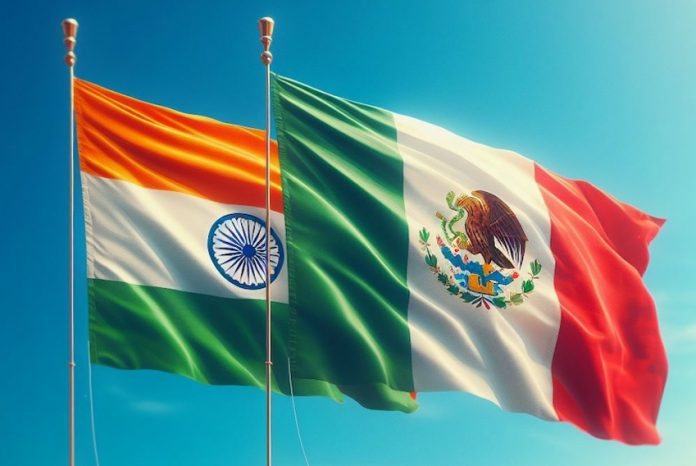Almost three-quarters of a century ago, Mexico became the first Latin American country to establish diplomatic relations with India after the South Asian nation obtained independence from the British in 1947.
Since the commencement of formal relations in 1950, “the trajectory of our all-round bilateral ties has shown growing intensity,” Indian Prime Minister Narendra Modi said during a joint press conference in 2016 with Enrique Peña Nieto, Mexico’s president at the time.
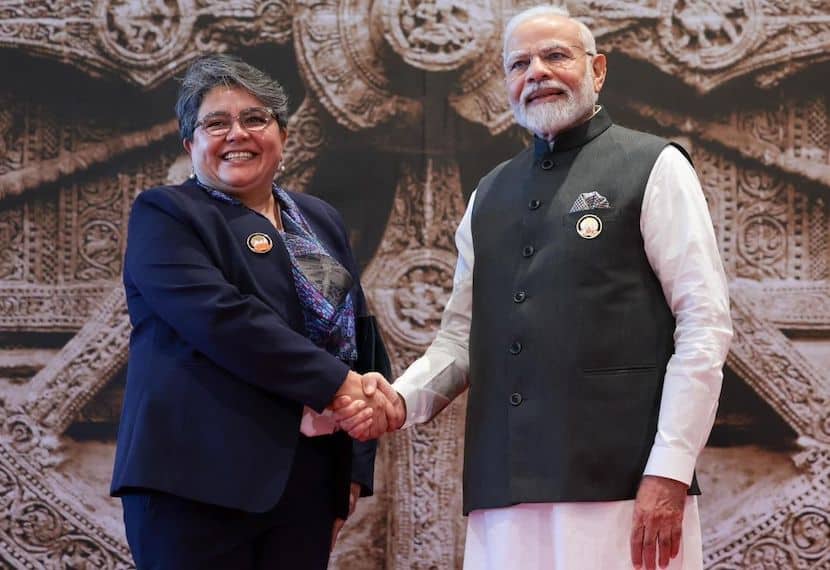
While the formal Mexico-India relationship was established 74 years ago, the connection between the two lands and their peoples goes back centuries.
In this article — the first in our “Global Mexico: India in Focus” series — I’ll take a look at how the relations between the two countries have changed over time, and also consider the state of bilateral affairs between Mexico and India today.
Trade and cultural ties in colonial times
Between the mid-1500s and the early 19th century, a sea trade route known as the Manilla Galleon operated between Manila, Philippines, and Acapulco, Mexico.
The establishment of the northern Pacific route allowed a range of Indian products to reach Mexico, which, during the period, was under Spanish control and called the Viceroyalty of New Spain. They included textiles, cinnamon and pepper as well as mango, tamarind and coconut trees.
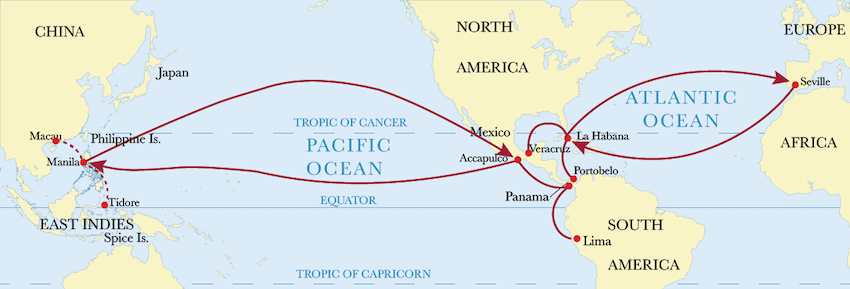
Silver, chiles, tobacco and chocolate were among the goods shipped along this route from New Spain to Asian countries including India.
There was also an exchange of people between Asia and the Americas in this period, and many of those who traveled east across the Pacific Ocean were “Indian women who were placed in wealthy families and convents in Mexico City, Puebla and other affluent cities of New Spain,” according to Mexico’s Embassy in India.
One of these immigrants, according to legend, was a woman baptized in Mexico as Catarina de San Juan. Better known today as “La China Poblana” — at least partly because she married the Chinese servant of a priest in Puebla — Catarina de San Juan is credited by many with inspiring Mexico’s national dress, also called a China Poblana, due to the traditional Indian clothes she wore, including a garment called a langa voni.
Mirra — as was her original name — was “born around 1606 in India during the Mughal dynasty,” according to a journal article published by Colorado State University.
“She grew up amidst royalty until her parents, fleeing a ‘Turkish’ invasion, left for a safer city, according to one of her biographers, the Jesuit Alonso Ramos. One day when she and her younger brother were playing on the beach, ruthless Portuguese pirates abducted her,” the article continues.
She was taken to New Spain as a slave but ended up living much of her life in a convent in Puebla.
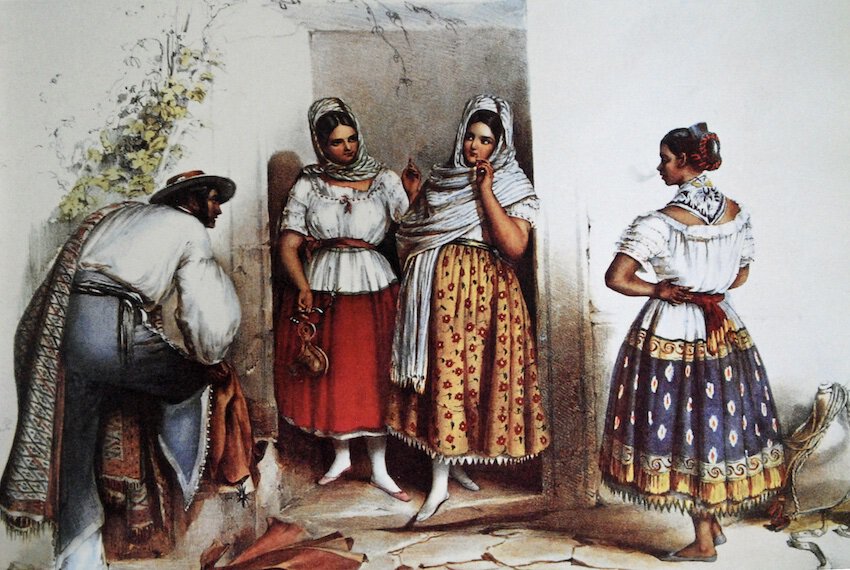
“She adopted the Catholic faith with such fervor that she became widely known for her religious visions and ecstasies,” according to Mexico’s Embassy in India. “The fact that she had accepted Catholicism so enthusiastically despite being born into another religion made her an exemplary case.”
Another fascinating story of interaction between Mexicans and Indians is one that played out in the United States in the early 20th century.
A significant number of Mexican women married Indian Sikhs, which resulted in the emergence of many Punjabi-Mexican enclaves in states like California, Texas and Arizona.
“The restrictive migration policies of the U.S. pushed solidarity between the Indian and Mexican migrants that had settled in California and Texas and mainly worked in the agricultural fields,” according to Mexico’s Embassy in Delhi.
“Recently, scholars … [have been] studying the rise and decline of a Punjabi-Mexican community that was composed of around 400 marriages, mostly Mexican women with Sikh men.”
1950 to the 2020s: A brief history of the modern Mexico-India relationship
Three years before bilateral diplomatic relations were established, Mexico recognized India’s independence, becoming the first Latin American nation to do so.

In 1961, India’s first prime minister, Jawaharlal Nehru, visited Mexico.
“The similarities between India and Mexico are many, Mr. Prime Minister,” Mexican president Adolfo López Mateos said in a welcome address.
“Listing them would be long-winded, but there is one that unites us in such a way in present times that we cannot not mention it: the persevering effort of India and Mexico in the struggle for peace,” he said.
López Mateos traveled to India in 1962, becoming the first Mexican president to visit the nation. The bilateral relationship developed further with the dispatch the same year of Octavio Paz to New Delhi to serve as Mexico’s ambassador to India. Mexicans’ knowledge of India also developed as a result of the time Paz spent in India. The winner of the Nobel Prize in Literature wrote books about the country while he was there, including the non-fiction work In Light of India.
“Waves of heat; huge grey and red buildings, a Victorian London growing among palm trees and banyans like a recurrent nightmare, leprous walls, wide and beautiful avenues, huge unfamiliar trees, stinking alleyways, torrents of cars, people coming and going, skeletal cows with no owners, beggars, creaking carts drawn by enervated oxen, rivers of bicycles,” Paz wrote in a lyrical description of Bombay, now called Mumbai.
According to India’s Embassy in Mexico, the bilateral relationship with Mexico over the past seven decades “has been characterized by warmth, friendship and commonality of views on a wide range of issues.”

“During the Cold War years, Mexico and India worked together closely as members of the UN, G-77, G-15 and G-6 (nuclear disarmament), both actively championing the interests of developing countries such as in the Uruguay Round of Trade Negotiations.”
Over the years, the two countries have reached agreements in a range of areas including science and technology, cultural cooperation, tourism, agriculture, academic cooperation, human rights, renewable energy and water management. They have also cooperated on major global issues such as nuclear disarmament and climate change.
In 2007, Mexico and India entered into a “privileged partnership,” while Prime Minister Modi and former president Peña Nieto committed in 2016 to elevate bilateral relations even further to the status of “strategic partnership,” an objective that has not yet been reached but could be soon.
“We are now looking to move beyond a buyer-seller relationship and into a long-term partnership,” Modi said during his 2016 press conference with Peña Nieto.
“Information technology, energy, pharmaceuticals, and automotive industries are among key growth areas of our commercial linkages. But, there is potential to expand our commercial and investment [partnership], and science and technology partnership in new areas,” he said.
At the opening of a Mexican consulate in Mumbai last year, then foreign affairs minister Marcelo Ebrard said that the relationship between Mexico and India was closer than ever “for several reasons,” including “geopolitical stress and similarities in our positions in the world,” investment flows between the two countries and “the will” of President López Obrador and Prime Minister Modi to strengthen ties.
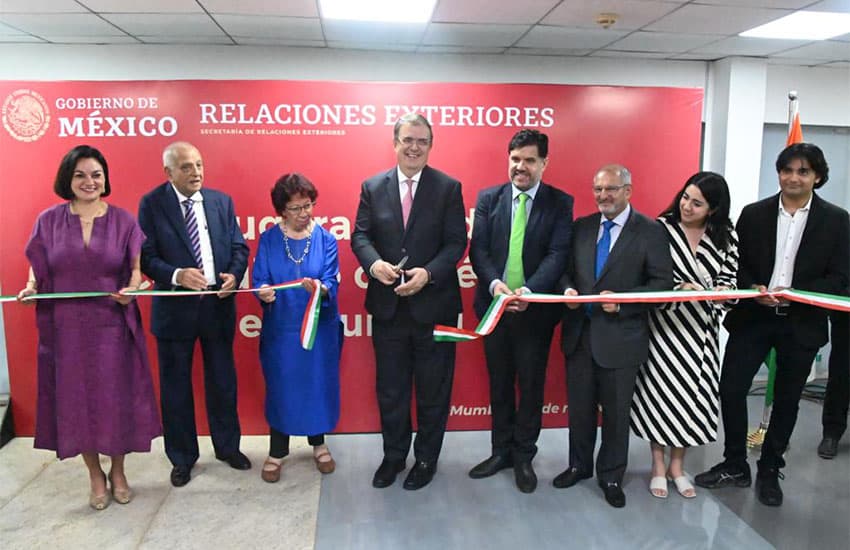
Later in 2023, Economy Minister Raquel Buenrostro traveled to New Delhi for the G20 Summit, where she met with Prime Minister Modi and other Indian officials.
Bilateral relations today
India — the world’s most populous country and fifth largest economy — was Mexico’s 10th largest trade partner in 2022, with two-way trade between the two countries valued at US $11.4 billion, according to the national statistics agency INEGI. The figure represents an increase of almost 13% compared to the previous year.
At US $7.54 billion, the value of India’s exports to Mexico was almost double the value of Mexico’s exports to India, which generated revenue of US $3.86 billion in 2022.
India’s exports to Mexico include motor vehicles (the top export in 2022), auto parts, aluminum, chemical products, rubber tires and clothes. Mexico’s exports to India include gold (No. 1 in 2022), cell phones, data processing machines, oil, auto parts and chemicals.
Another important aspect of the modern-day bilateral relationship is cultural exchange. In India, Mexico’s embassy promotes Mexican art and culture in a range of different ways, including in museum exhibitions and art festivals.
“Our focus goes on to include identification of cultural ties and common social experiences that bind Mexico and India together and their articulation through literature, visual and performative arts,” the embassy says.

“The Embassy of Mexico believes that culture is a powerful tool for reinforcing and affirming the bilateral ties and the threads that weave our countries and its people together.”
In Mexico, a key disseminator of Indian culture is the Gurudev Tagore Indian Cultural Center in Mexico City. Regular classes for yoga, Indian classical and Bollywood dances, sitar, tabla, Hindi, Sanskrit and Indian cooking classes are held at the center, according to the Indian Embassy.
The presence of many Indian companies in Mexico helps to foster people-to-people links between Mexicans and Indians, around 8,000 of whom live permanently in Mexico, according to the embassy.
The three strongest performing areas for Indian investments in Mexico are information technology, pharmaceuticals and the automotive sector, the embassy says. A number of major Indian companies in those sectors, and others, operate here.
Meanwhile, cinema chain Cinépolis and bakery company Grupo Bimbo are among the Mexican companies that have invested in India.
The future looks bright for relations between Mexico and India, in large part due to the commitment on both sides to continue to strengthen bilateral ties. Asked in a recent interview what the Indian Embassy’s goals in Mexico are for 2024, Ambassador Pankaj Sharma mentioned the aim of elevating the relationship with Mexico to strategic partnership status.
“This will be possible with careful steps addressing all aspects of the bilateral relationship,” he said.
“Both countries are focused on deepening and broadening our engagement and removing bottlenecks,” Sharma remarked.
By Mexico News Daily chief staff writer Peter Davies (peter.davies@mexiconewsdaily.com)
Want to read more of the Global Mexico series? Check out the stories from “Australia in focus” week.
